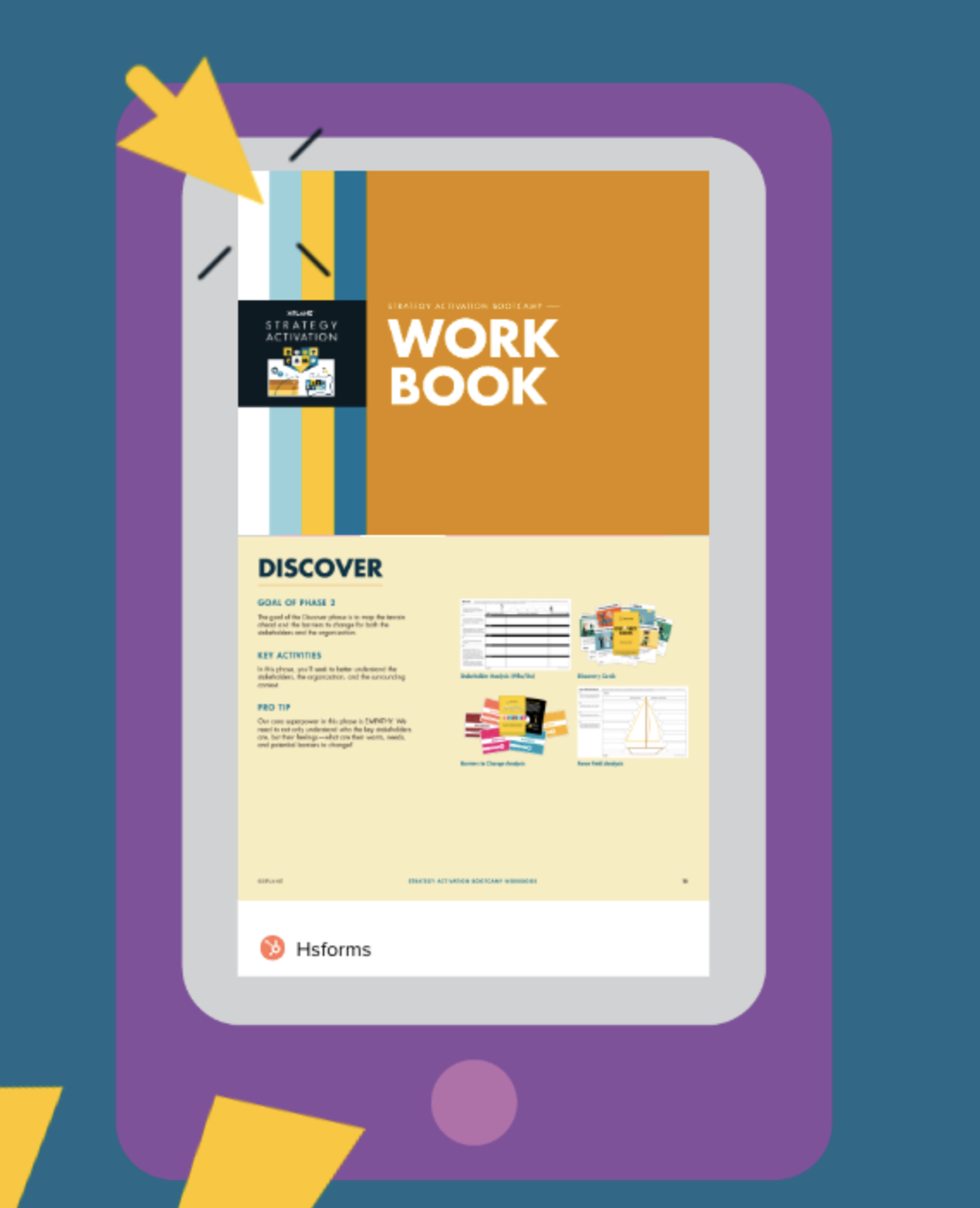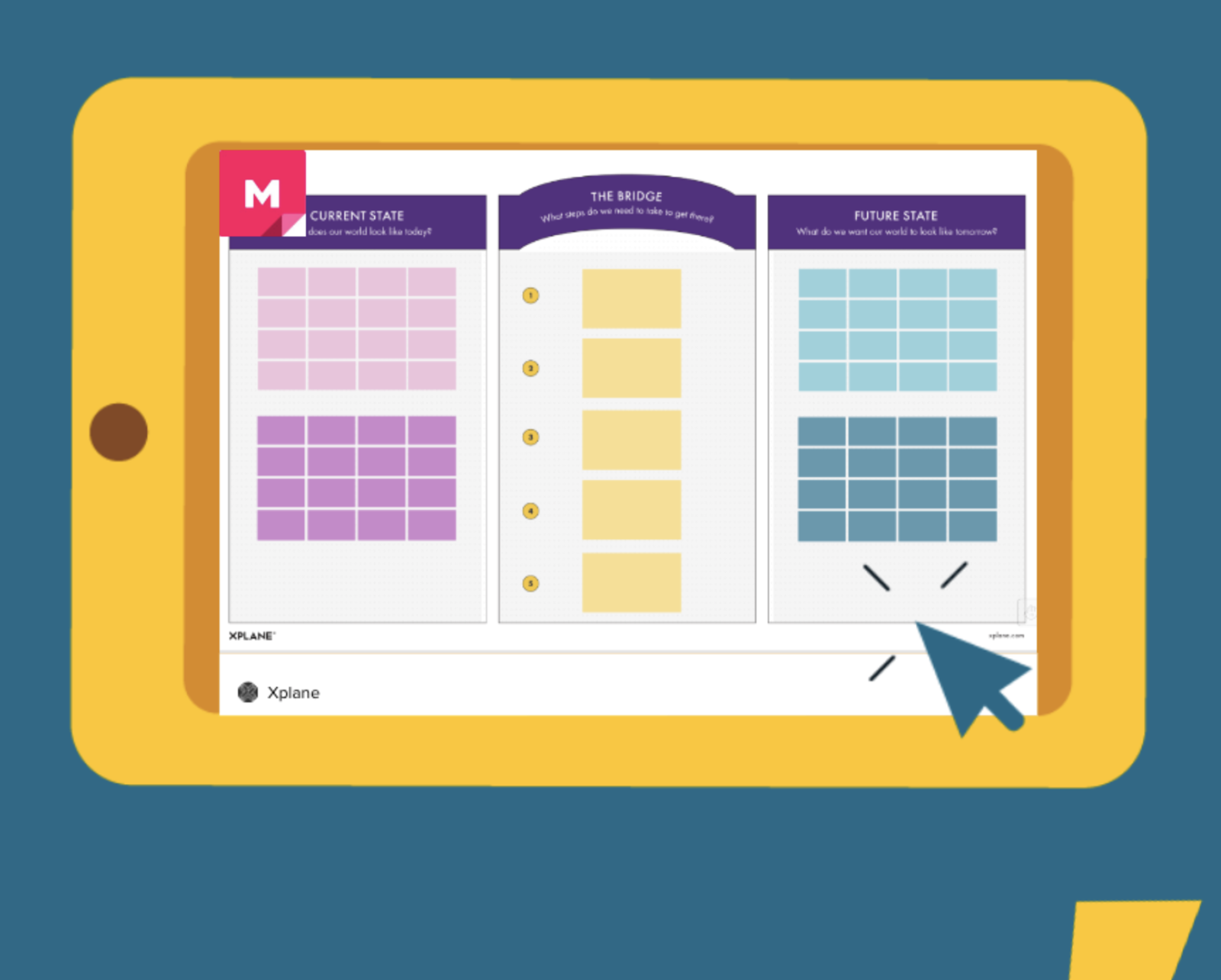We’ve all heard the gripes: Remote learning just doesn’t work!
Before the pandemic, our years of delivering hands-on workshops and in-person learning experiences made us serious skeptics, too.
After all, how does a global design consultancy known for visual capture and prolific use of sticky notes shift to captivate learners and workshop attendees online?
Our analog beginnings
At XPLANE, we started hosting in-person Visual Thinking Workshops (now known as Visual Thinking Bootcamps) in 2017. When the pandemic hit, we realized we were far from offering virtual learning experiences.
These workshops were fully analog, two-day events featuring stacks of sticky notes and a flurry of pen-to-paper exercises. Participants were required to travel to Portland, Oregon for these intensive courses — a big commitment for most participants and for XPLANE staff hosting the event.
Because of this, our workshops were few and far between.
What made the workshop experience worthwhile was our ability to fully engage learners in the activities — sprinting through drawing exercises, collaborating in class on hypothetical projects, and making connections across a diverse range of people, from facilitators to strategists, artists, educators, and other professionals.
At the close of each event, participants would leave with more confidence in their drawing abilities, a slew of resources, and new connections and friendships.
Making the shift to digital
As we began to pivot to virtual workshops during the pandemic, we realized it wouldn’t be enough to merely translate the in-person experience. Instead, we sought to capture the magic of in-person engagement online.
To accomplish this, we defined a set of criteria for success:
- Maintain a high level of engagement
- Create a painless virtual experience
- Encourage peer-to-peer connection
- Expand access to learners around the world
- Build an adaptable infrastructure
- Create a repeatable course structure
Launch and learn
We learned a lot from launching our first virtual course: Visual Thinking Bootcamp. Here are a few lessons we learned:
- Shorten sessions: Using Zoom and MURAL, we conducted our bootcamp in shorter segments (think two hours across multiple days rather than two eight-hour days). Through real-world experiences and taking into account the research on video calls, we realized online learning is most effective in short spurts — and better suited participants’ busy schedules.
- Embrace hybridity: Embracing hybridity was essential. So much of XPLANE’s visual thinking course is about putting pen to paper and practicing simple exercises to become comfortable with visual tools and frameworks. We didn’t want to lose this core piece.
We kept hand-drawn elements of our workshop intact by asking participants to share photos of their drawings on course-related MURAL boards. Using MURAL as home base for the course allowed us to easily share course assignments, enabled participants to collaborate and provide real-time feedback, and created a cohesive brand experience through designed boards and course handouts.
- Enable asynchronous participation: To bridge the gaps between participants in various time zones and course sessions, we encouraged participants to engage asynchronously by using notes in MURAL, Zoom chat in live sessions, or Basecamp chat (asynchronously).
- Leverage technology: In addition to using Zoom and MURAL, we leveraged Basecamp to distribute course reminders, handouts, and lead conversations offline.
- Vary presentation: During each session, we were intentional about varying the presentation to include live sketching, discussion, and a variety of individual and group activities to keep high levels of engagement and group interaction.
Thinking digital-first
When developing our second virtual bootcamp (Strategy Activation Bootcamp), we shifted to a digital-first mindset, creating a fully virtual experience from the start.
To accomplish this, we moved away from the worksheets and pen-to-paper activities of our Visual Thinking Bootcamp and developed fully digital card decks, MURAL boards, and tools. We also developed a visual course roadmap to show our course sections, tools, and activities connected to the overall curriculum and learning outcomes.



During the Visual Thinking Bootcamp, we also learned students jump in and out of the course — joining as their schedules allowed. Therefore, it was important to give them an easy way to plug in and continue to be engaged even if they missed a session.
We significantly amped up the asynchronous engagement and collaboration by providing students a digital course workbook and an individualized MURAL board.

Students used these to develop their individual activation plan — an end-of-course assignment. Students could still share their plans during daily discussions and solicit feedback from peers and instructors, but most importantly, they could take their plan with them and adapt it to their context.
From the student perspective, this made the course instantly more applicable and practical.
Remote learning does work
As we’ve fine-tuned our approach to remote learning over the past 16+ months, we’ve discovered the joys and benefits of remote learning — deeper connections, a larger community of learners, powerful tools that enable creativity, flexibility in learning schedules, the excitement of mastering new skills, and much more. And our students echo our excitement.
To hear student reviews, download your tip sheet, or check out a sample template, we invite you to explore the presentation MURAL board.

Over the past year and a half, we’ve learned a lot about creating engaging remote learning experiences. Here are our top tips and takeaways:
Key Tips & Takeaways
- Create a visual course journey to help your course participants understand the expectations for the course, connect learning outcomes with course content, and make it easy to find in the likely case they miss a section or need to reference back to content once the course is over.
- Set up multiple ways to connect. Encourage participants to connect with each other and with the instructor via Zoom chat, shared notes in MURAL, and your chosen learning portal or solution.
- Break up content with a mix of individual and group exercises to encourage active engagement and peer-to-peer learning.
- Rethink collaboration. Don’t over-rely on real-time engagement. Make space for asynchronous, pre-engagement, and post-engagement collaboration. In a global context, some of the best student discussions might happen while you’re asleep.
- Build in added prep and testing time. We can’t stress this enough. Course facilitation is 80% preparation and 20% showing up!
- Be intentional about designing moments of joy, inspiration, and connection.




%20(3).avif)



.png)




